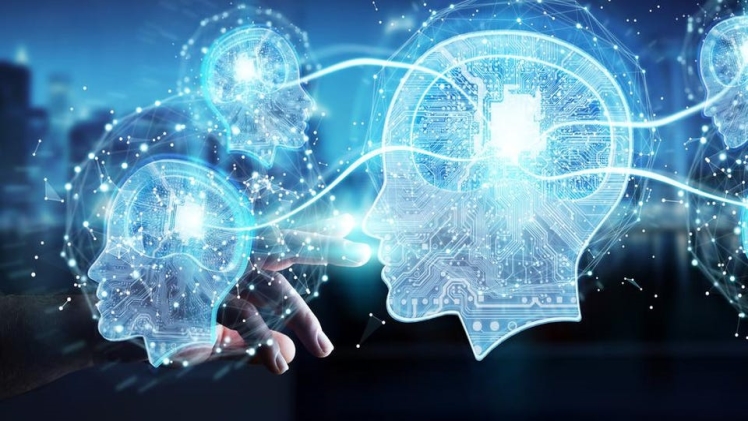Nowadays, Artificial intelligence (AI) exists everywhere. Self-driving vehicles, Siri or Alexa as personal assistants, chatbots, and email scheduling aides are all examples of specialized activities that may easily replace everyday human duties. Artificial Intelligence Training in Paris many aspects of digital human life, as seen by these instances, although describing the scope of its influence is complex.
Every industry nowadays has AI as part of its offering, and the remainder is prepared to follow suit. And with each passing day, more and more organizations are becoming more reliant on AI. Many misunderstandings about what AI is and what it can achieve occur due to this process. Hence, signing up for AI and ML certification courses is a must if you’re looking to get into an organization whose work area includes programming and related concepts.
5 Common Myths And Reality of AI
- Myth: Artificial intelligence (AI) will eliminate human occupations.
- Reality: AI will enhance existing occupations while also creating new ones.
In several domains, AI and automation have significantly impacted labor activity. The previous industrial revolution, such as the mass move from agriculture to factories in the nineteenth century, altered the job landscape. Observing such events confirms that AI will undoubtedly automate certain occupations while also generating new ones.
Some sectors, particularly those that need social and creative intelligence, are still inaccessible to AI. An AI system, for example, can assist in detecting a patient’s disease but cannot respond to their queries or unfavorable responses with human empathy.
Without a doubt, careers that complement AI programming will be established as well. For example, since AI systems depend on extensive data, individuals will need to identify, create, and clean, massive data.
- Myth: Machine learning and artificial intelligence are the same things.
- Reality: Both are very different concepts.
Although artificial intelligence (AI) and machine learning (ML) are sometimes used interchangeably, the two technologies have distinct ideas; even if they seem to be related, they are not the same.
The term “artificial intelligence” refers to computers that mimic human intellect via many approaches, one of which is machine learning. AI’s ultimate goal is to create an intelligent system that can mimic human thinking and intelligence. On the other hand, machine learning instructs a system to learn from given data and produce the desired result.
As a result, AI strives to make computers more human-like, while ML attempts to make robots learn the same way that people do.
- Myth: AI can function without the aid of humans.
- Reality: Artificial intelligence is reliant on humans.
This is a mistaken assumption that AI systems can learn on their own without the aid of humans. Humans must identify issues, devise solutions, assign tasks, and supply information for AI systems to learn. Data scientists devote a significant amount of work to designing and developing various methodologies that must be applied in AI robots.
People believe that AI devices are intelligent enough to learn on their own. However, robots have not yet advanced to the point where they are capable of making their own judgments.
An AI-powered chatbot, for example, may enhance consumer interactions, resulting in increased sales. Because conventional FAQ-based chatbots provide a superior customer engagement experience, these chatbots must be taught on a constant basis utilizing customer interaction datasets.
Another example would be AI-enabled systems that can assist in danger detection and response without human interaction. This is achievable only when hackers or cybercriminals use the power of excellent AI algorithms to attack digital systems. It means that human leaders in cyber security companies must be ready to deal with ever-changing assaults.
- Myth: Machines with neural networks are capable of functioning similarly to a human brain.
- Reality: Neural net-based machines are still a long way from replicating the complicated structure of the human brain.
Many individuals believe that artificial intelligence (AI) can accomplish all of the activities that humans can. In actuality, neither computer scientists nor neuroscientists are sure about how the human brain functions interact—the human brain-inspired the artificial neural network, which is a subset of AI. The human brain’s operation is still a mystery and a complex problem to tackle. Another notable distinction is that AI is computer-based, but the human brain is organic.
Deep learning, which is also based on artificial neural networks, is another AI idea. The computer chips in this technology mimic how biological neurons learn to detect any pattern. This technology is used to improve language translation, voice recognition, fraud detection, picture recognition, and self-driving automobiles, among other things.
- Myth: Using AI for business requires the engagement of professionals and a significant investment.
- Reality: Businesses can easily purchase ready-to-use equipment at reasonable costs.
While incorporating AI approaches into their operations, some firms demand data scientists, machine learning expertise, and large expenditures. Ready-to-use software solutions are a solution that is meant to be simple to use by enterprises.
AI technology used to need a high level of programming language knowledge and sophisticated learning. Companies like Google, Apple, Amazon, Facebook, and well-funded start-ups will rely on business apps rather than ready-to-use in-house technologies.
For example, Amazon has already discovered a solution for speaker-independent speech recognition and noise cancellation technology with Alexa, enabling voice commands to be used in any situation. As a result, creating a voice interface for business software seemed to be a more straightforward way to resolve any inquiry. This means that current AI solutions provide the most commercial benefit. It demonstrates that procedures needless data science skills and more understanding of essential business operations and requirements.
Final Words
In the human mind, there are several misunderstandings concerning AI. To overcome it, users must recognize that each technology is still in its early stages. Change is unavoidable, and one must be prepared for it.
People should believe in AI instead of myths, according to the findings. It’s part of the natural progression of human tool and technology usage. So, before incorporating artificial intelligence into existing business operations, it’s critical to dispel certain common misunderstandings about the technology.

